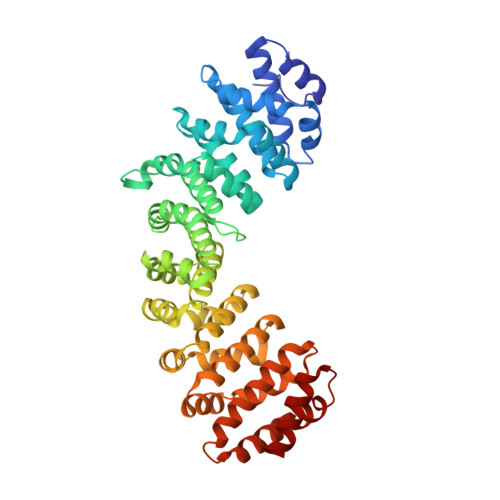Structural basis for the nuclear import of the human androgen receptor
Cutress, M.L., Whitaker, H.C., Mills, I.G., Stewart, M., Neal, D.E.(2008) J Cell Sci 121: 957-968
- PubMed: 18319300
- DOI: https://doi.org/10.1242/jcs.022103
- Primary Citation of Related Structures:
3BTR - PubMed Abstract:
Ligand-dependent nuclear import is crucial for the function of the androgen receptor (AR) in both health and disease. The unliganded AR is retained in the cytoplasm but, on binding 5alpha-dihydrotestosterone, it translocates into the nucleus and alters transcription of its target genes. Nuclear import of AR is mediated by the nuclear import factor importin-alpha, which functions as a receptor that recognises and binds to specific nuclear localisation signal (NLS) motifs on cargo proteins. We show here that the AR binds to importin-alpha directly, albeit more weakly than the NLS of SV40 or nucleoplasmin. We describe the 2.6-angstroms-resolution crystal structure of the importin-alpha-AR-NLS complex, and show that the AR binds to the major NLS-binding site on importin-alpha in a manner different from most other NLSs. Finally, we have shown that pathological mutations within the NLS of AR that are associated with prostate cancer and androgen-insensitivity syndrome reduce the binding affinity to importin-alpha and, subsequently, retard nuclear import; surprisingly, however, the transcriptional activity of these mutants varies widely. Thus, in addition to its function in the nuclear import of AR, the NLS in the hinge region of AR has a separate, quite distinct role on transactivation, which becomes apparent once nuclear import has been achieved.
- Uro-Oncology Research Group, Cancer Research UK Cambridge Research Institute, Robinson Way, Cambridge, CB2 0RE, UK.
Organizational Affiliation:

















